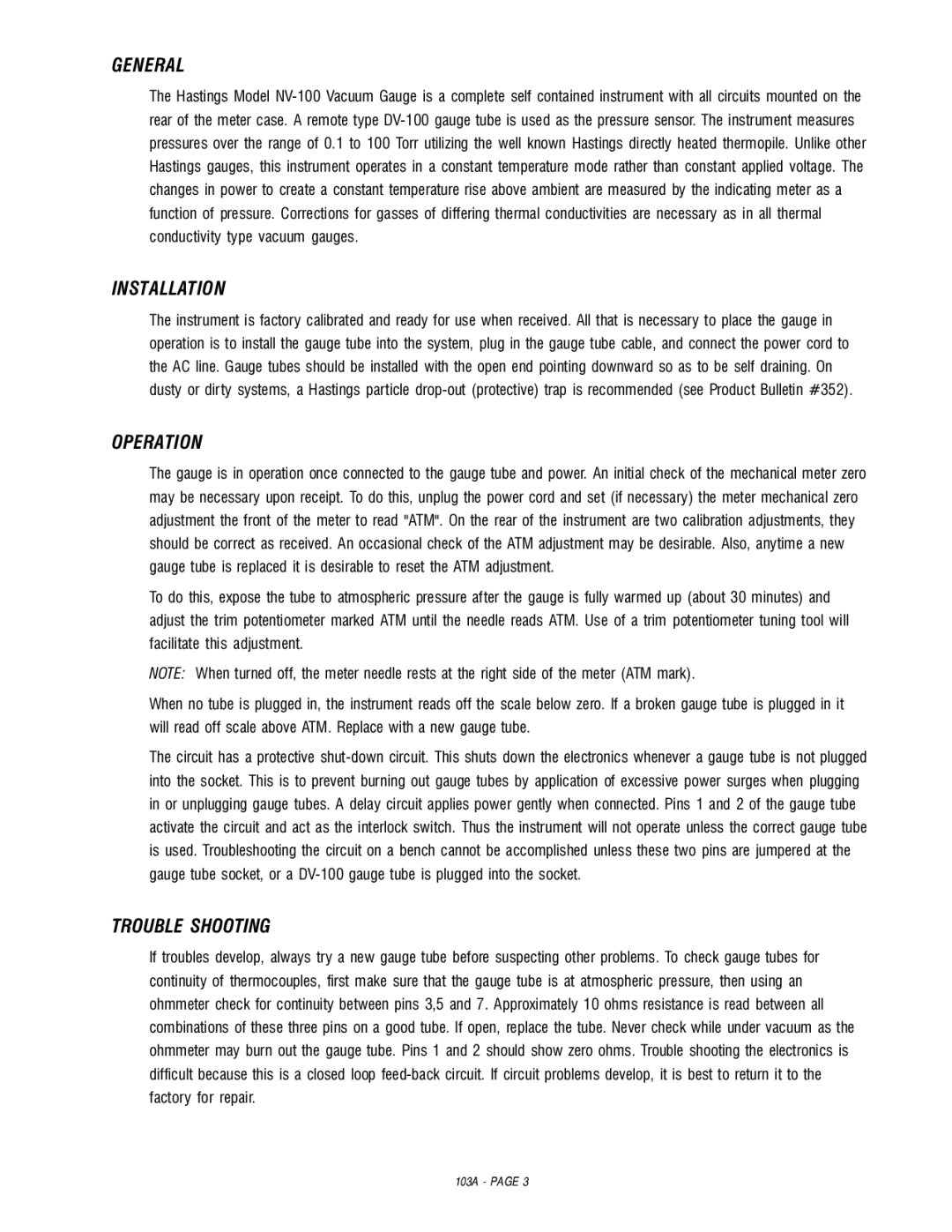GENERAL
The Hastings Model
INSTALLATION
The instrument is factory calibrated and ready for use when received. All that is necessary to place the gauge in operation is to install the gauge tube into the system, plug in the gauge tube cable, and connect the power cord to the AC line. Gauge tubes should be installed with the open end pointing downward so as to be self draining. On dusty or dirty systems, a Hastings particle
OPERATION
The gauge is in operation once connected to the gauge tube and power. An initial check of the mechanical meter zero may be necessary upon receipt. To do this, unplug the power cord and set (if necessary) the meter mechanical zero adjustment the front of the meter to read "ATM". On the rear of the instrument are two calibration adjustments, they should be correct as received. An occasional check of the ATM adjustment may be desirable. Also, anytime a new gauge tube is replaced it is desirable to reset the ATM adjustment.
To do this, expose the tube to atmospheric pressure after the gauge is fully warmed up (about 30 minutes) and adjust the trim potentiometer marked ATM until the needle reads ATM. Use of a trim potentiometer tuning tool will facilitate this adjustment.
NOTE: When turned off, the meter needle rests at the right side of the meter (ATM mark).
When no tube is plugged in, the instrument reads off the scale below zero. If a broken gauge tube is plugged in it will read off scale above ATM. Replace with a new gauge tube.
The circuit has a protective
TROUBLE SHOOTING
If troubles develop, always try a new gauge tube before suspecting other problems. To check gauge tubes for continuity of thermocouples, first make sure that the gauge tube is at atmospheric pressure, then using an ohmmeter check for continuity between pins 3,5 and 7. Approximately 10 ohms resistance is read between all combinations of these three pins on a good tube. If open, replace the tube. Never check while under vacuum as the ohmmeter may burn out the gauge tube. Pins 1 and 2 should show zero ohms. Trouble shooting the electronics is difficult because this is a closed loop
